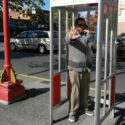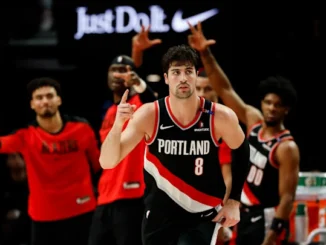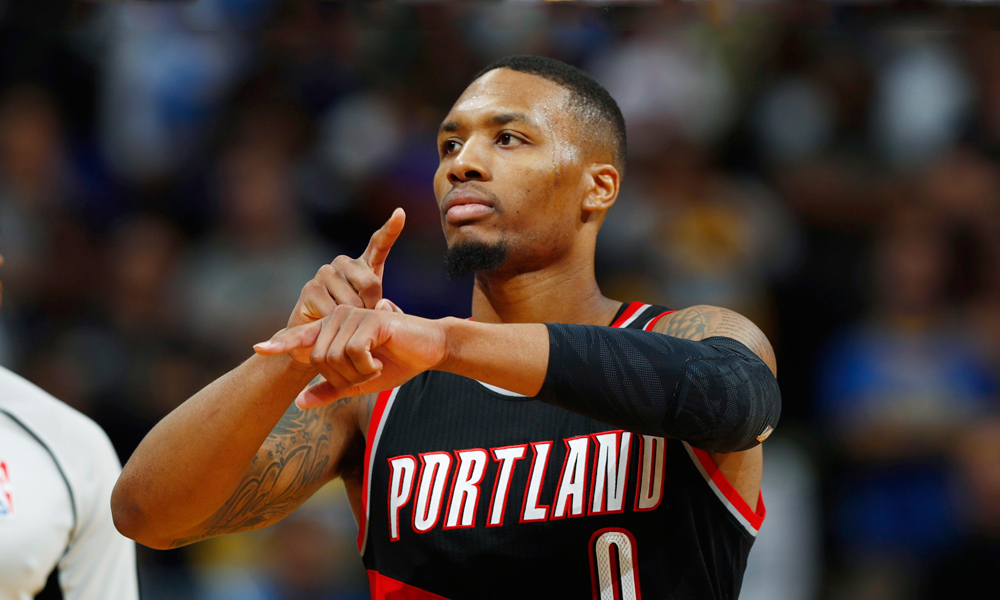
The 2019 NBA Draft took place last Thursday evening, and Portland was there to collect their annual influx of young talent. While each team technically controls their own draft destiny as their success on the court directly translates to their spot in the draft order (or at least their chances at a lottery pick), the system may be outdated and might not serve the league’s desired product best any more.
The current draft system is intended to equally distribute talent, as it does its best to inhibit the good teams from getting a top-flight player, and it loads unsuccessful teams with top end talent but a limited supporting cast. In a vacuum that sounds like a fair plan, but is it really working? Are the bad teams getting significantly better year after year, and are the contenders able to stay at the top while drafting from the bottom of the barrel? Is the current system helping the Portland Trail Blazers get better year to year?
For answers to those questions and more, Casey Mabbott (CM) and Bryant Knox (BK) speculate on how the Blazers did in this year’s draft, if the system truly works, how they would change it, and what past draft they would change if they had a time machine.
1. With the 25th selection in the 2019 NBA Draft, Portland selected Nassir Little out of the University of North Carolina. What do you think of the pick, and what do you expect from Little in his first year?
(CM) I hope I’m wrong but this feels a lot like a re-do of the 2015 Draft when Portland held the #23 pick and used it to select forward Rondae Hollis-Jefferson out of the University of Arizona. At the time most experts felt RHJ was a great physical talent, but a raw project that showed great instincts on defense and needed a lot of work on offense. In essence, a younger and more physical Nic Batum. Batum had been dealt to Charlotte the day prior, so drafting RHJ made sense, especially for a team in rebuild mode. Not to be, as RHJ was dealt to Brooklyn on draft night (Brooklyn is unofficially the Blazers of the east for those of you keeping an eye on their roster in recent years) and Neil Olshey signed free agent Al-Farouq Aminu as the actual replacement for Batum. Now Aminu is a free agent, and may be on another roster next year, so drafting Little makes sense. The only way this parallel gets any stranger is if Portland finds a way to sign and trade Aminu to Charlotte in order to bring Batum back in order to give Little time to develop and to learn from Batum. I don’t expect to see Little on the court much in his rookie season, this is a team coming off their first conference finals in 19 years, and while I like Little’s upside, and even though he was a projected lottery pick, I don’t think he will be able to produce enough to crack the second unit most nights. This seems like a long term investment for when Aminu and Moe Harkless are suiting up for other teams, and to give Lillard and McCollum an elite wing defender at the tail end of Portland’s title window.
(BK) Portland never planned on taking someone at 25 who could contribute right away. At least, Neil Olshey shouldn’t have been looking for a prospect to come in and have an impact that late in the game. But Nassir Little was projected by some (ESPN included) as a near-top-10 pick, and when you see that kind of player slip, you have to at least consider what kind of role he can play as a rookie. Physically, Little compares to Boston’s Jaylen Brown, except his wingspan is a solid 1.5” longer. His game might compare most to a Thaddeus Young, albeit an undersized one. Little’s game is best utilized as a small-ball 4, which fits Portland’s (and most modern team’s) system well, but you do have to question how it’s going to translate to the pros at just 6’6”. I wouldn’t expect Little to have an Aminu-like impact any time soon, but it’s easy to see him starting to establish his role in the rotation more quickly than either an Anfernee Simons or GTJ were able to in 2018-19.
2. Many in Portland were hoping the Trail Blazers would find a trade partner for #25 as a rookie does not help Portland win now. Are you glad they kept the pick, and if not, what kind of deal were you hoping to see them make? Was there a player in this draft you would have been willing to trade up for?
(CM) In a perfect world it would have been nice to see Portland unload some role player contracts and #25 in order to move up or to bring in an established veteran. Either scenario likely clears some cap room to keep some key players or go after a player in one of the deepest free agent classes in some time. But those situations were not realistic given the Blazers’ lack of desirable assets and most potential trade partners were going to want a star player or high draft pick(s), which wasn’t going to happen. Keeping the pick was the most likely scenario, and if Little is the steal he is supposed to be, then it’s a good move to bring in a player who might one day turn into a solid rotation player at worst and develop in to a starter at best.
(BK) Moving up never felt like an option in this year’s draft, so unless the team was planning to move out of the first round altogether, I think the 25th selection ended up as good as it possibly could have. You get a player hungry to prove he’s better than his draft slot and someone who plays a position of need for Portland. No. 25 was never ideal, but the player who fell to Portland is.
3. Do you prefer the current draft system, or would you prefer teams were able to bid for the right to certain draft spots?
(CM) I don’t like the current format, so why not take a chance on something that is not just entertaining to watch, but also goes toward creating a way to get the best players on the right teams? I would imagine an auction format would provide added drama to a program that desperately needs it, and would give successful teams an actual shot at getting the best college players. Why are we punishing Zion Williamson by making him play for the Pelicans until his rookie contract is up and he goes nuts in free agency? Sure, the possibility exists that he can team up with Lonzo Ball and Brandon Ingram and win a title, but there’s an equal or greater chance that he struggles to make the playoffs for four years and wants out. Is that really creating a more fair way to distribute talent, or is it just a ruse to keep the struggling teams relevant by marooning a college superstar on an island for their first few years, and then we call out that guy for “selling out” when he bolts for a team that can compete. I say bring on the auction.
(BK) The idea of an auction draft or a bid-system to get into spots is a fun one to fantasize about. If you’ve ever done an auction fantasy draft—or wished your favorite team’s owner with the giant pocketbook could buy his way up to its next star—this has some appeal. But who profits off the bids in this situation? If it’s the league and the league only, fans will be instantly turned off. Parity also becomes a bigger concern if small-market teams struggle to bid up. It becomes a huge problem in the eventually inevitable scenario where a team drops $50 million or whatever it may be to draft the No. 1 pick (on top of his salary) and he turns out to be Greg Oden 2.0. The lottery isn’t perfect, but it avoids a lot of these complications.
4. If you could go back in time and convert a draft (during your lifetime only) to auction style, what draft would you go back to, which player would you make sure Portland drafted, and what assets would you offer for the right to that pick? The draft in question must be one that Portland did not already hold a lottery selection.
(CM) Let’s go back 10 years, and trade up in 2009. You could get James Harden at #3, and I’m willing to bet all it would cost to trade with OKC is Nic Batum (who was highly sought after at the time) and a 2010 first rounder which was virtually wasted on Elliott Williams anyway. Then you get a lineup featuring Harden with Brandon Roy and LaMarcus Aldridge for at least 2 years, and when Roy’s knees fail in 2011, you just move on and wait two years for Damian Lillard to show up in 2012 and compete for a title. And who knows, maybe Aldridge sticks around too. Because that’s how time travel works, I get to keep the good stuff I already have and trade out the stuff I don’t want. Don’t believe me? Just ask Dr. Brown.
(BK) Instead of drafting in the No. 23 spot, can the Blazers buy the No. 1 pick in 2003 and give the guy the No. 23 jersey instead? Don’t worry, Travis Outlaw; you’ll land somewhere.
5. If you could do away with the salary cap (or make the cap very difficult to reach), do you think it would create a more entertaining on-court product for the casual fan?
(CM) In other markets maybe, but here in the Rose City I think it just gives Neil Olshey the power to pay Evan Turner one billion dollars if he wants to, and there’s nothing anyone can do about it. While a salary cap can be tough for smaller market teams, if you think giving everyone deeper pockets magically gives teams like the Blazers more money to spend this summer, think again. The last time the salary cap was expected to inflate, the Blazers spent like they were printing their own money, and still couldn’t land a marquee free agent. Perhaps this summer would have been different as there is some recent success to use as a selling tool, but with one of the most expensive rosters in the league for at least one more year, we’ll never know what might have been. In other markets, it would just create even more expensive super teams, and maybe that’s the way to go if all we care about is fast forwarding to the top four teams playing each other at the end of the season anyway, and that’s what the casual fan is going to actually care about.
(BK) “Contraction” might as well be a four-letter word in NBA circles, and for good reason. But in a world where the NBA salary cap disappears, you have to start thinking about it. The first team to Moneyball their way to a title would be looked upon as one of the greatest all-time one-off Davises in a league of Goliaths, but for the other teams stuck at the bottom, it becomes unbearable. FWIW, a league where most teams feature All-Star lineups does sound entertaining at the top. After all, that’s why we love the NBA isn’t it? The star power? But as far as casual fans go, all eyes will be on, as Casy mentions, the top four or so teams. It’s not to say it can’t work, as we could ultimately find out billionaire owners still have anxiety about luxury tax bills, not to mention what you know would be even harsher repeat-payer fees. But if it got out of hand and organic growth became even harder to come by, you’d have to look at shrinking the league and re-branding around All-Star talent-level competition on every court every night.




